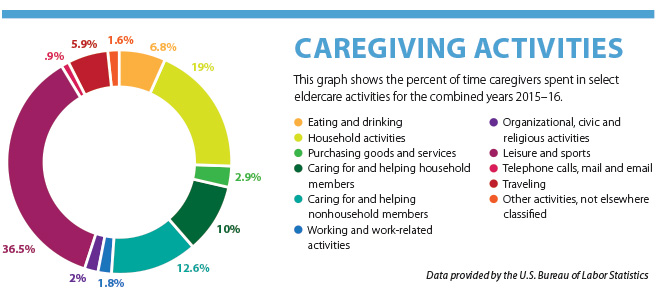
Preparing for the Unexpected
According to the United States Census Bureau, by 2029, when all of the Baby Boomers will be 65 years of age or older, they will make up more than 20 percent of the total U.S. population.
Not only will this shift in aging shape the demographic composition of the United States, it will also shape the future of caregiving.
As the aging population grows, so does the need for care services. Decisions about caregiving and caregiving itself often fall to family members – sometimes in unexpected ways. Additionally, the nation faces a senior health care worker shortage, and traditional senior housing options face a lack of occupancy vacancies.
When combined, these factors make it more important than ever to and creative, innovative ways to prepare for and approach an aging trend that will soon impact millions of families.
Make a Difference. Be Prepared.
We never know when our loved one will require our help. There are several things to consider in advance as you prepare to become a caregiver:
- Arrange a family meeting ahead of time and ll out a health care directive. When you discuss the details of giving your time and support to aging family members ahead of time, your family is more prepared when your loved one requires more assistance and caregiving.
- Find out your loved one’s needs and wishes. What sorts of care supports do they require? Do they wish to stay at home? Are there opportunities for involvement nearby, like senior centers or community engagement options?
- Weigh whether or not you’re able to be their caregiver. When it comes down to it, the affordable option might be to care for your loved one in their home or move them into yours. Can you adequately support their care needs? Is there a “backup” support system nearby if you go out of town?
The Important Role of In-home Supports
“Aging in place,” or staying in your current home as you age, is a desire consistently being reported by older adults. In fact, 80% of Minnesota seniors plan to remain at home as long as possible. It not only promotes greater independence, but it can also preserve connections to loved ones and friends. Other supports, like in-home care and assistive technologies, play a vital role in enabling safe and happy aging in place. Home care and assistive technologies promote greater independence, thus reducing reliance on others for help, and can also help reduce the number of older adults entering long- term care facilities, providing significant savings to individuals and the health care system and allowing for ease on family members and other caregivers.
For information about health care directives, visit: honoringchoices.org/health-care-directives.
See How Caregivers Spend Their Time

This story is from the December 2017 issue of Northfield Retirement Community's newsletter, NRC Insights. Read the full issue here.
